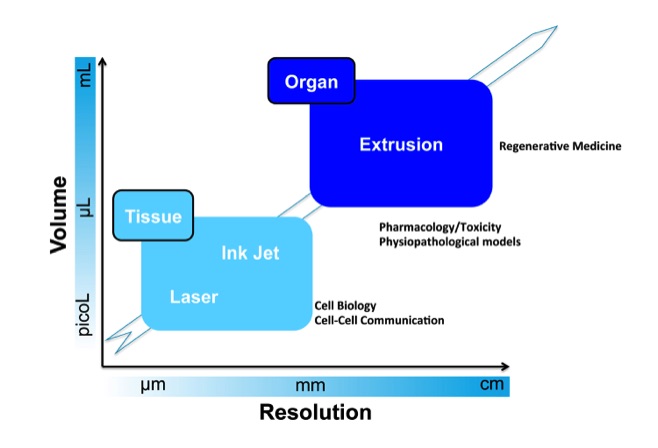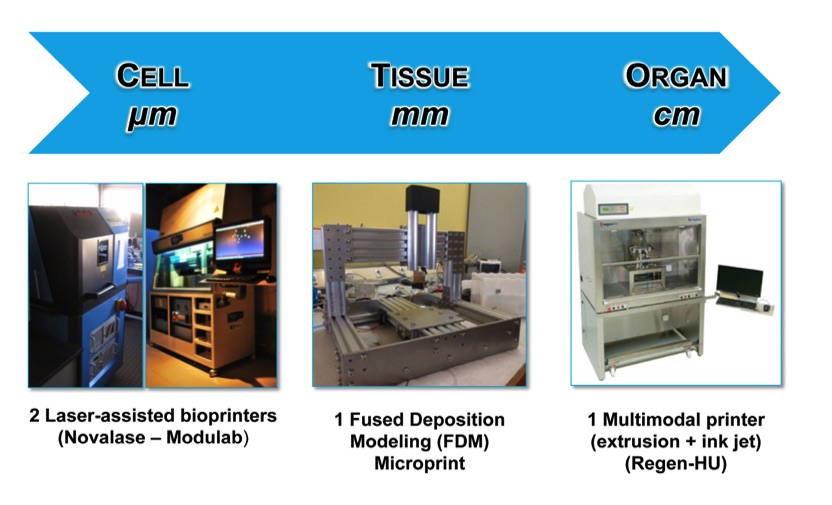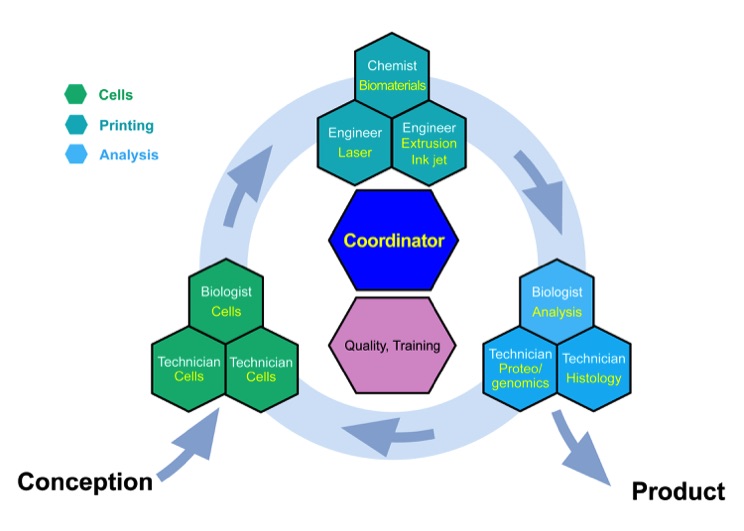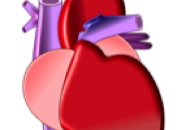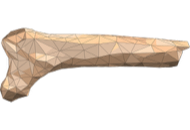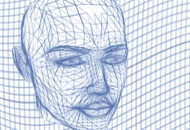RESEARCH AREAS
Bioingénierie Tissulaire (BioTis)
Inserm U1026
Université Bordeaux
146, rue Léo-Saignat
33076 BORDEAUX cedex - France
Tél. : 33 (0)5 57 57 14 88
Fax : 33 (0)5 56 90 05 17
Website: ART- Bioprinting: Accélérateur de Recherche Technologique - Bioimpression
(Accelerator of Research in Technology- Bioprinting)
The ART- Bioprinting is a new and intrinsic part of BioTis. This new tool funded by the INSERM is designed to accelerate the development bioprinting and to promote the accessibility of new research tools to all the INSERM units.
The ART has three main missions:
- Provide training and production services in 3D bioprinting available to all INSERM laboratories.
- Accelerate the development of tissue culture models for research and for clinical applications in Regenerative Medicine.
- Promote the integration of 3D bioprinting in INSERM laboratories.
Based on the specific needs of a project, we can recommend the use of a series of printing devices that can provide a wide range of resolution and volumetric delive
With an ever-growing number of devices, our team of biologists, engineers and chemists can work together to find the right cells in the right ink to print on the right scaffold to generate a construct that will meet the specifications of most projects.
The ART was officially founded in 2017 and will evolve to develop three clusters of expertise: a cellular group, a printing group and a construct analysis group. The system is based on a close collaboration with the other laboratories of INSERM to combine our respective expertise in order to produce new and innovative bioprinted tissues. The ART is a unique opportunity for research teams to take advantage of these technologies and establish new borders on their own research, without having to invest and develop the expertise needed for bioprinting.
If an initial collaboration is successful, this can evolve in either a continued use of the ART facilities for a collaborative research project, or in the purchase of a printer by the collaborating lab and the training of its personnel by members of the ART.
